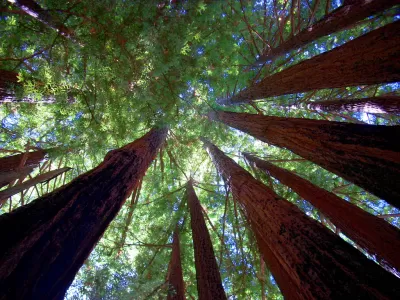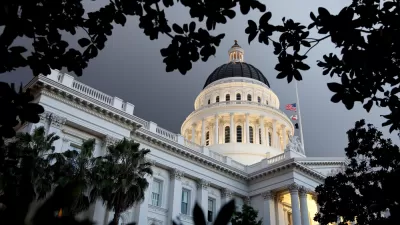The new study determined that carbon forestry offsets, which allow polluters to reduce carbon emissions out-of-state rather than in impacted communities near large pollution sources, is a beneficial climate program.

A controversial California climate program, condemned by environmental justice advocates because it allows large emitters, like oil refineries, to spend funds out-of-state rather than reducing emissions in impacted communities surrounding their facilities, was found to have a positive impact on mitigating climate change.
“Offsets are loopholes for our largest corporate polluters,” said Amy Vanderwarker, co-director of the , in a March Los Angeles Times article on the program.
The offset program is part of California's cap-and-trade program, the only state-run carbon trading program in the nation, that expires at the end of 2020. Offsets were eliminated from SB 775, an unsuccessful bill to continue the program through 2030, but were included in AB 398, which passed the legislature last month with bipartisan support and was signed by Gov. Jerry Brown.
"According to the researchers’ findings, that program is protecting imperiled forests and preventing the carbon they store from being released into the atmosphere," reports energy & environment contributor Chelsea Harvey for The Washington Post.
"Forest offsets, which account for the majority of offsets in California’s cap and trade market, involve forest owners changing the way they manage their land so trees will store more carbon," reports Rob Jordan for the Stanford News on the research published August 14 in the journal, Frontiers in Ecology and the Environment.
This could involve cutting trees less often, reforesting previously forested land or improving forests through various management practices. Under any scenario, professional foresters vet the changes to ensure they are effective.
"The new study suggests some of the concerns surrounding the program may not actually be cause for worry — at least for now," adds Harvey.
Offsets are not only controversial, they are “a super complicated thing to get right,” explains Michael Wara, a former climatologist and environmental law expert at Stanford University who was not involved with the new research, writes Harvey.
“In some sense, forest carbon is trading one kind of co-benefit for another kind of co-benefit,” Wara said. “It’s not strictly a benefit, it’s a trade-off, because we’re going to burn more carbon in California in exchange for storing more carbon elsewhere.”
The new cap-and-trade legislation is sensitive to the concerns of environmental justice advocates. It establishes a "Compliance Offsets Protocol Task Force to provide guidance to the state board in approving new offset protocols ... for the purposes of increasing offset projects with direct environmental benefits in the state while prioritizing disadvantaged communities, Native American or tribal lands, and rural and agricultural regions."
Hat tip to James Brasuell.
FULL STORY: A controversial California effort to fight climate change just got some good news

Planetizen Federal Action Tracker
A weekly monitor of how Trump’s orders and actions are impacting planners and planning in America.

Maui's Vacation Rental Debate Turns Ugly
Verbal attacks, misinformation campaigns and fistfights plague a high-stakes debate to convert thousands of vacation rentals into long-term housing.

Restaurant Patios Were a Pandemic Win — Why Were They so Hard to Keep?
Social distancing requirements and changes in travel patterns prompted cities to pilot new uses for street and sidewalk space. Then it got complicated.

In California Battle of Housing vs. Environment, Housing Just Won
A new state law significantly limits the power of CEQA, an environmental review law that served as a powerful tool for blocking new development.

Boulder Eliminates Parking Minimums Citywide
Officials estimate the cost of building a single underground parking space at up to $100,000.

Orange County, Florida Adopts Largest US “Sprawl Repair” Code
The ‘Orange Code’ seeks to rectify decades of sprawl-inducing, car-oriented development.
Urban Design for Planners 1: Software Tools
This six-course series explores essential urban design concepts using open source software and equips planners with the tools they need to participate fully in the urban design process.
Planning for Universal Design
Learn the tools for implementing Universal Design in planning regulations.
Heyer Gruel & Associates PA
JM Goldson LLC
Custer County Colorado
City of Camden Redevelopment Agency
City of Astoria
Transportation Research & Education Center (TREC) at Portland State University
Jefferson Parish Government
Camden Redevelopment Agency
City of Claremont



























